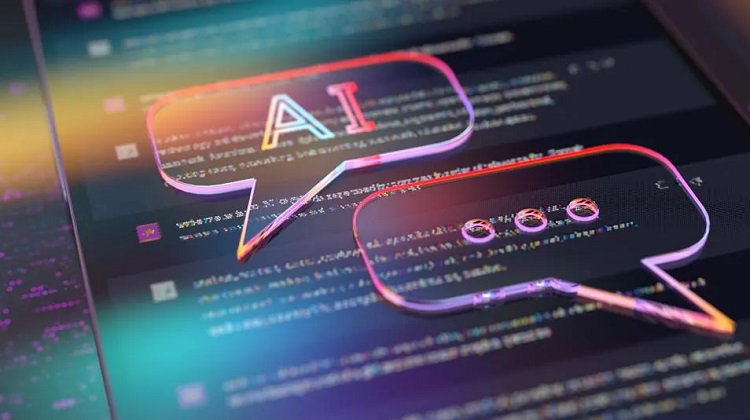IT
Sistemi Educativi & Intelligenza Artificiale
Il vecchio sistema educativo di massa (uno molti) non funziona più !
Immaginiamo un farmaco come l'aspirina che viene somministrato ad una popolazione mondiale, senza tener conto della diversità biologica dei corpi degli individui.
Ormai, con l'avanzamento e i progressi della scienza e della medicina, sappiamo tutti che il futuro è la somministrazione e dosaggio personale, entrambi basati su una precisa composizione molecolare del farmaco per avere una perfetta rispondenza e reazione in ogni corpo.
Quindi, non una aspirina per tutti.
Ma per ogni individuo, la sua aspirina !
Per poter avviare un processo radicale di rigenerazione profonda del sistema educativo formale e non formale di "E-Learning", "Life Long Learning" , "UpSkilling", "ReSkilling" e in generale di "Armonizzazione Culturale Democratica" di una popolazione, bisogna utilizzare l'arte dell'ascolto e della narrazione autentica dell'esperienza vissuta di ogni cittadino, per comprendere al meglio le sue aspettative, i suoi sogni e le sue paure.
Ma per affrontare le criticità e le nuove sfide del III millennio, il nuovo sistema governativo educativo, prima ancora di introdurre nuove figure di professionisti, deve creare nuovi ambienti "LIVE" di apprendimento continuo e con il massimo livello di interazione tra docente - studente, studente-società, società-docente, in un continuo loop (Universe Loop) H24/365, utilizzando tecniche di "open innovation" , "social innovation" e "audience engagement" .
Il sistema educativo del III millennio deve avere più libertà, creatività, flessibilità ed adattabilità
nella modellazione continua del modulo didattico per ciascun studente in modo da garantire
l' "Armonizzazione Culturale Democratica" della popolazione di ogni nazione.
Soltanto, dopo aver individuato le criticità e le problematiche del sistema attuale, si può migliorare l'offerta con nuovi contenuti educativi, utilizzando anche le ultime tecnologie "cutting edge" disponibili sul mercato come gli ambienti immersivi, VR (virtual reality), AR (augmented reality) e altri.
Ci troviamo in un momento di convergenza tecnologica perfetta dove si incontrano vari settori con le stesse esigenze di aggiornamento e rigenerazione tecnologica, come i settori dell' education, entertainment e gamification.
Negli ultimi 30 anni, l'Europa e il Nord America, hanno continuamente cercato di migliorare il proprio sistema educativo, (seppur questi tentativi di miglioramento, non sempre siano riusciti ad ottenere il massimo dei risultati).
Nelson Mandela ha sempre sostenuto che l’istruzione è l’arma più potente che si può utilizzare per cambiare il mondo: in questo senso l’Africa, pur essendo un continente ricco di risorse e potenzialità, presenta ancora delle lacune per quanto riguarda l’analfabetismo e sono ancora tante le persone che non hanno accesso all’istruzione di base.
Ma proprio con questo bagaglio di esperienze ultraventennale dell'Europa e del Nord America, che in Africa può essere disegnato ed avviato uno dei migliori sistemi educativi, senza ripetere gli stessi errori commessi in Occidente.
Joseph Caristena

EN
The social impact of AI on educational systems
...from End User to Power User...
Immersive technology, blockchain and AI are reshaping our world !

In response to the growing presence of AI in education, organizations like the U.S. Department of Education (ED) and UNESCO have called for a transparent, human-centered approach to the use of these technologies.
ED recommends prioritizing educators' perspectives in developing AI solutions that enhance and support teachers' traditional roles rather than attempt to replace them.
Along with state entities such as the California Department of Education, UNESCO advocates for equity-focused AI in education policies aimed at narrowing technological gaps within communities and worldwide.
Leading AI companies have taken note of the education space’s unique needs and concerns regarding the responsible use of artificial intelligence and have begun to adapt their products to address these factors.
Although artificial intelligence presents novel concerns for the education sector, most teachers we surveyed reported a positive outlook on the future.
Also teachers want more education to understand AI and use It Ethically
98% of our survey respondents identified a need for at least some education on ethical AI usage.
More than 60% recommended comprehensive education.
What Are the Functions of AI in Education?
We’re still learning how AI technologies will integrate into the education sector as they develop, and we don’t yet have a full picture of how AI will affect critical issues of ethics, equity and data safety.
However, we’ve already pinpointed several key uses for artificial intelligence in education, including the following.
AI-Powered Educational Games
Teachers have long recognized the value of play-based learning, and schools have used educational computer games—such as The Oregon Trail, first released in 1974—since the early days of computer gaming. Today’s AI-powered games can deliver targeted learning thanks to user-responsive programming.
Adaptive Learning Platforms
Educational technology leaders such as Carnegie Learning and Knewton offer adaptive platforms that customize learning activities and content in real time. Continuous assessment allows for immediate feedback and helps the system adjust its approach. Adaptive learning methodologies vary from simple rules-based systems to multifaceted machine learning algorithms.
Automated Grading and Feedback Systems
By automating grading, planning and administrative work, artificial intelligence systems can free up educators’ time and energy for increased student contact. This is a common argument in support of using AI in the classroom.
Chatbots for Student Support
At many higher education institutions, university chatbots support learners by responding to admissions queries, connecting students to course information and student services and delivering reminders. Other chatbots can help students brainstorm ideas, improve their writing skills and optimize their study time.
Intelligent Tutoring Systems
Often dedicated to a single subject such as math or language, intelligent tutoring systems simulate the one-on-one experience of working with a human tutor. Examples include the Duolingo app and Khan Academy’s Khanmigo tutoring system.
Immersive Interactive Worlds
Author:
Joseph Caristena
Link
Link
INDIRE
https://www.indire.it
Education & Gamification
https://schoolofscholars.edu.in/blog/gamification-in-education/
more links:
https://www.coe.int/en/web/education/artificial-intelligence
https://www.weforum.org/agenda/2024/06/the-technology-trio-of-immersive-technology-blockchain-and-ai-are-converging-and-reshaping-our-world/
...

